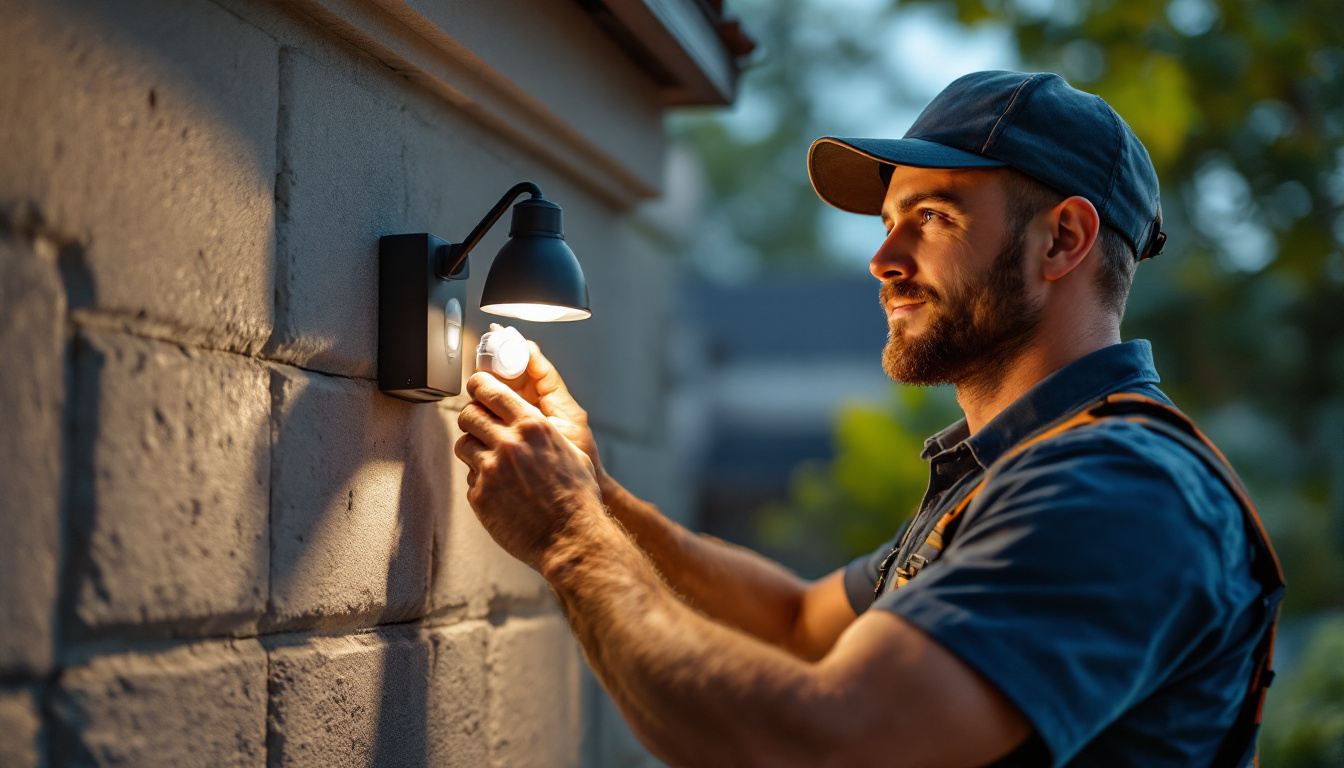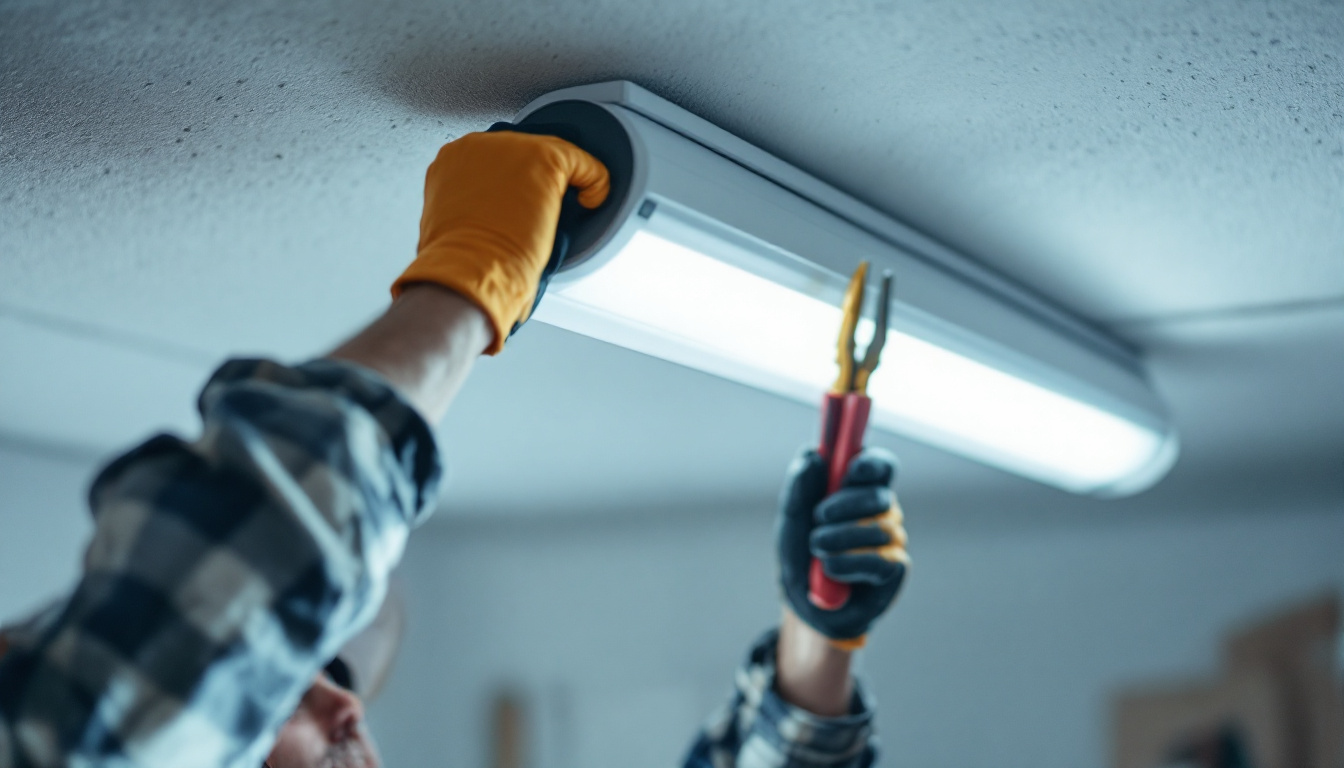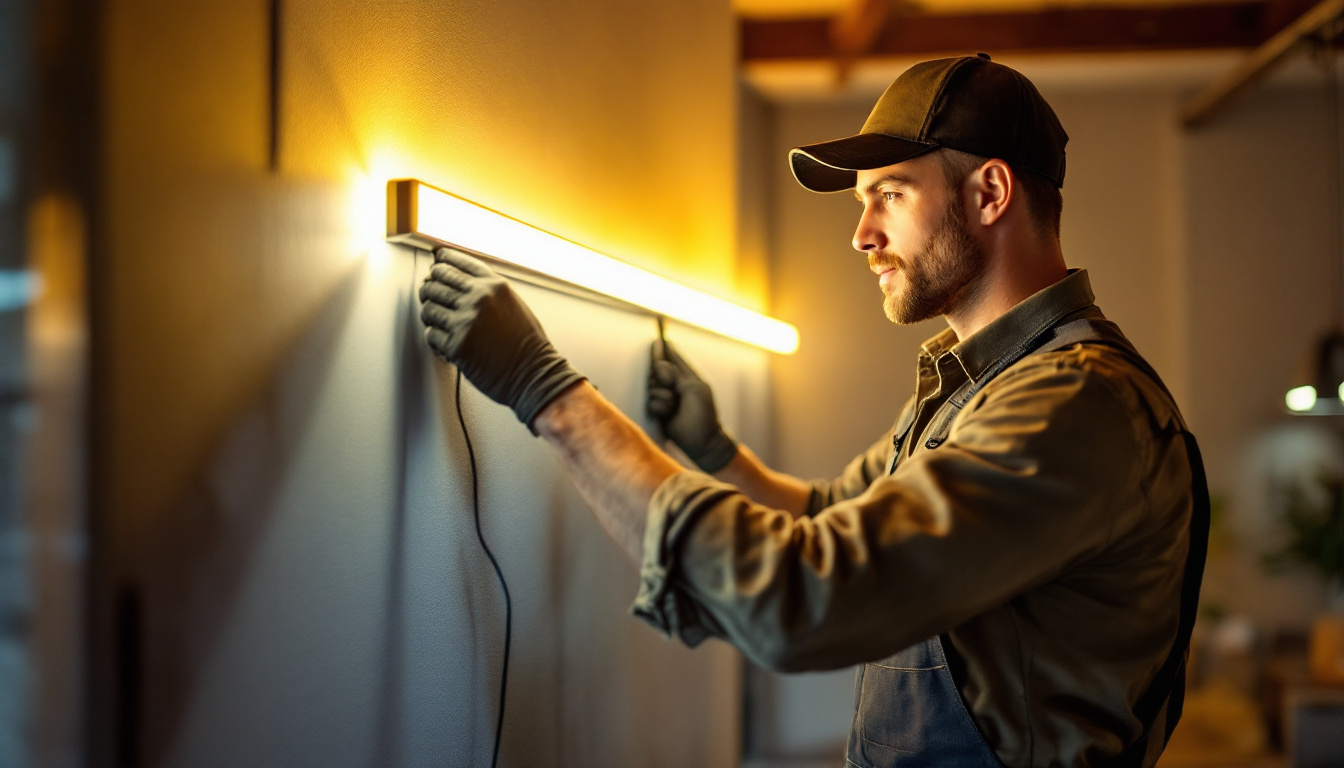
In the ever-evolving world of outdoor lighting, motion sensors have emerged as a vital component for enhancing security, energy efficiency, and user convenience. For lighting contractors, understanding the significance of motion sensors is crucial for delivering optimal solutions to clients. This article delves into the importance of motion sensors for outdoor lighting, exploring their benefits, applications, and the role they play in modern lighting design.
As homeowners and businesses alike prioritize safety and energy efficiency, the demand for outdoor motion sensor lighting systems has surged. This trend is driven by several factors, including rising crime rates, increased awareness of energy consumption, and the desire for smart home integration.
One of the primary reasons for the growing popularity of motion sensor lights is their ability to enhance security. By illuminating areas only when movement is detected, these lights deter potential intruders and provide peace of mind to property owners. Lighting contractors can leverage this feature to offer clients a sense of safety, particularly in vulnerable areas such as driveways, entrances, and backyards.
Moreover, the sudden activation of lights can startle intruders, making them think twice before attempting to enter a property. This psychological deterrent is often more effective than traditional lighting systems that remain on continuously. Additionally, many modern motion sensor lights come equipped with advanced features such as adjustable sensitivity settings and customizable light durations, allowing homeowners to tailor their security systems to their specific needs. This adaptability not only enhances security but also ensures that the lights are not triggered by small animals or passing vehicles, reducing unnecessary wear and tear on the system.
Another compelling reason for incorporating motion sensors into outdoor lighting systems is energy efficiency. Traditional outdoor lights often remain on throughout the night, leading to unnecessary energy consumption. In contrast, motion sensor lights activate only when needed, significantly reducing electricity usage.
For lighting contractors, promoting energy-efficient solutions can be a strong selling point. Clients are increasingly looking for ways to lower their utility bills and reduce their carbon footprint. By installing motion sensor lights, contractors can help clients achieve these goals while also contributing to a more sustainable environment. Furthermore, many motion sensor lights now utilize LED technology, which not only consumes less power but also has a longer lifespan compared to traditional bulbs. This combination of energy savings and longevity means that clients can enjoy lower maintenance costs over time, making motion sensor lights an attractive investment for both residential and commercial properties.
Motion sensors can be integrated into various outdoor lighting applications, making them versatile tools for lighting contractors. Understanding these applications can help contractors tailor their offerings to meet specific client needs.
In residential settings, motion sensor lights are commonly used for pathways, driveways, and entryways. These lights not only enhance security but also provide convenience for homeowners returning home after dark. For instance, a motion-activated light can illuminate a pathway, ensuring safe navigation without the need for manual switches.
Additionally, outdoor lighting can be programmed to create a welcoming atmosphere, turning on automatically when guests arrive. This feature not only enhances the aesthetic appeal of a home but also adds a layer of functionality that clients appreciate.
In commercial and industrial environments, motion sensors play a critical role in ensuring safety and efficiency. Parking lots, loading docks, and building entrances are prime areas for motion-activated lighting. These systems can help prevent accidents by providing adequate illumination in high-traffic areas only when needed.
Moreover, businesses can benefit from the cost savings associated with reduced energy consumption. By installing motion sensors in outdoor lighting, companies can lower their operational costs while maintaining a safe environment for employees and customers.
For lighting contractors, selecting the appropriate motion sensor technology is essential for meeting client expectations. Various types of motion sensors are available, each with its own advantages and ideal applications.
Passive Infrared (PIR) sensors are among the most common types of motion sensors used in outdoor lighting. These sensors detect changes in infrared radiation, which occurs when a person or animal moves within their range. PIR sensors are highly effective for outdoor applications, as they can cover a wide area and are relatively easy to install.
Contractors should consider the range and sensitivity of PIR sensors when designing lighting systems. Proper placement is crucial to ensure that the sensors can effectively detect movement without being triggered by passing cars or other non-threatening activities.
Ultrasonic sensors operate by emitting high-frequency sound waves and measuring the time it takes for the waves to bounce back. These sensors can detect movement even in challenging conditions, such as through walls or obstacles. This makes them ideal for applications where a wider detection range is needed.
However, contractors should be aware that ultrasonic sensors may be more susceptible to false triggers from animals or environmental factors. Proper calibration and placement are essential to maximize their effectiveness.
Installing motion sensor lights requires careful planning and execution. Lighting contractors must consider several factors to ensure optimal performance and client satisfaction.
Effective placement of motion sensors is critical for maximizing their benefits. Contractors should assess the specific needs of the property, identifying high-traffic areas that require illumination. Additionally, the coverage area of the sensors must be taken into account to avoid blind spots.
It is also essential to consider the height at which the sensors are mounted. Installing them too high may limit their effectiveness, while placing them too low could lead to false triggers. A balance must be struck to ensure reliable operation.
Many clients may already have existing outdoor lighting systems in place. Lighting contractors should evaluate the compatibility of motion sensors with these systems, ensuring seamless integration. This may involve upgrading existing fixtures or wiring to accommodate new technology.
Furthermore, educating clients on how to use and maintain their motion sensor systems is crucial for long-term satisfaction. Providing clear instructions and support can help clients maximize the benefits of their new lighting solutions.
Clients who invest in motion sensor outdoor lighting can enjoy a range of benefits that enhance their overall experience. Understanding these advantages can help lighting contractors effectively communicate the value of their services.
The primary benefit of motion sensor outdoor lighting is the enhanced safety and security it provides. By illuminating areas only when movement is detected, clients can deter potential intruders and minimize the risk of accidents. This is especially important for properties located in high-crime areas or those with limited visibility.
Moreover, motion sensor lights can provide a sense of safety for clients and their families, particularly when navigating dark outdoor spaces. This peace of mind is invaluable and can significantly influence a client’s decision to invest in motion sensor technology.
Motion sensor lights offer unparalleled convenience for clients. With automatic activation, homeowners and business owners can enjoy well-lit outdoor spaces without the need for manual switches. This feature is particularly beneficial for clients who frequently arrive home after dark or for businesses that require lighting in parking lots or entrances.
Additionally, many motion sensor systems can be integrated with smart home technology, allowing clients to control their outdoor lighting remotely. This level of convenience adds a modern touch to outdoor lighting solutions and appeals to tech-savvy clients.
The field of motion sensor technology is continually advancing, and lighting contractors must stay informed about emerging trends to remain competitive. Understanding these trends can help contractors offer cutting-edge solutions to their clients.
As smart home technology becomes increasingly prevalent, motion sensors are being integrated into broader home automation systems. This allows clients to control their outdoor lighting through smartphone apps or voice commands, enhancing convenience and user experience.
Contractors should explore partnerships with smart home technology providers to offer comprehensive solutions that meet the evolving needs of clients. This integration can also lead to increased energy efficiency, as smart systems can optimize lighting based on occupancy and time of day.
Advancements in sensor technology are paving the way for more sophisticated motion detection systems. Newer sensors may incorporate features such as facial recognition, which can enhance security by differentiating between familiar and unfamiliar faces.
Additionally, the development of AI-driven motion sensors can improve accuracy and reduce false triggers, making outdoor lighting systems more reliable. Staying abreast of these advancements will allow lighting contractors to offer innovative solutions that set them apart from competitors.
In conclusion, motion sensors are an essential component of outdoor lighting systems, offering numerous benefits for both clients and lighting contractors. From enhanced security and energy efficiency to convenience and smart home integration, the advantages of motion sensor technology are clear.
Lighting contractors who understand the importance of motion sensors and their applications will be better positioned to meet client needs and deliver exceptional lighting solutions. By staying informed about emerging trends and technologies, contractors can continue to provide innovative and effective outdoor lighting systems that enhance safety, efficiency, and user experience.
Ready to upgrade your outdoor lighting projects with the latest motion sensor technology? Look no further than LumenWholesale, where we provide lighting contractors with high-quality, specification-grade lighting products at unbeatable wholesale prices. Say goodbye to local distributor markups and hello to superior lighting solutions that meet the highest industry standards. With our hassle-free bulk buying and free shipping, you can trust that you’re getting premium lighting at the best value — without any hidden fees. Elevate your lighting projects with the perfect blend of quality, affordability, and convenience. Discover our extensive selection and enhance your outdoor lighting systems today by visiting Wholesale Lighting at the Best Value.

Discover the essential metals that power LED lights and learn why their composition is crucial for efficient and sustainable lighting installations.

Discover the essential steps to safely remove fluorescent bulb covers with ease.

Discover the transformative power of magnetic LED light strips with insights from top lighting contractors.

Discover how heavy-duty waterproof electrical connectors are revolutionizing the lighting industry, offering unparalleled durability and reliability for contractors.